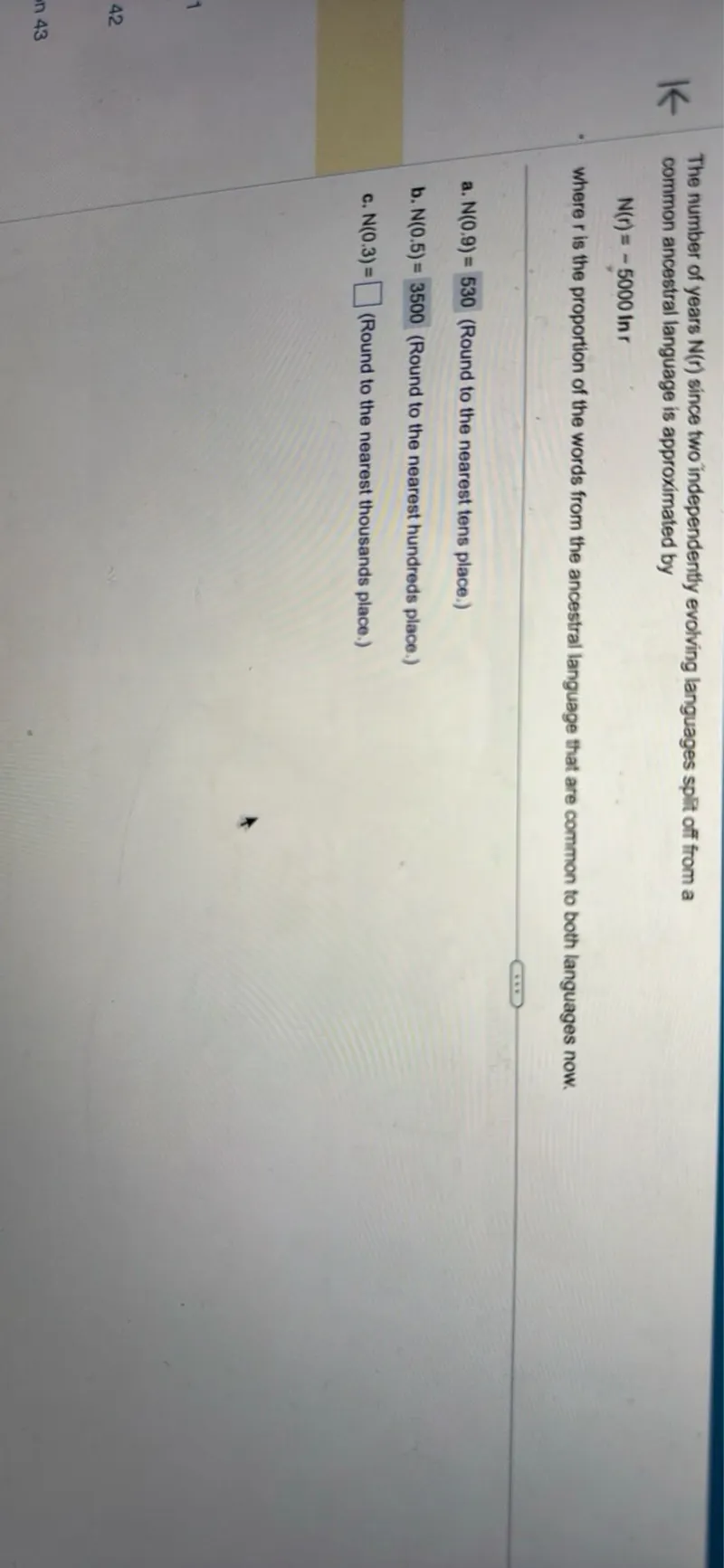Questions: The number of years N(r) since two independently evolving languages split off from a common ancestral language is approximated by N(r)=-5000 ln r Where r is the proportion of the words from the ancestral language that are common to both languages now. a. N(0.9)=530 (Round to the nearest tens place.) b. N(0.5)=3500 (Round to the nearest hundreds place.) c. N(0.3)= (Round to the nearest thousands place.)

Transcript text: The number of years $N(r)$ since two independently evolving languages split off from a common ancestral language is approximated by
\[
N(r)=-5000 \ln r
\]
Where $r$ is the proportion of the words from the ancestral language that are common to both languages now.
a. $\mathrm{N}(0,9)=530$ (Round to the nearest tens place.)
b. $\mathrm{N}(0.5)=3500$ (Round to the nearest hundreds place.)
c. $N(0.3)=$ $\square$ (Round to the nearest thousands place.)





